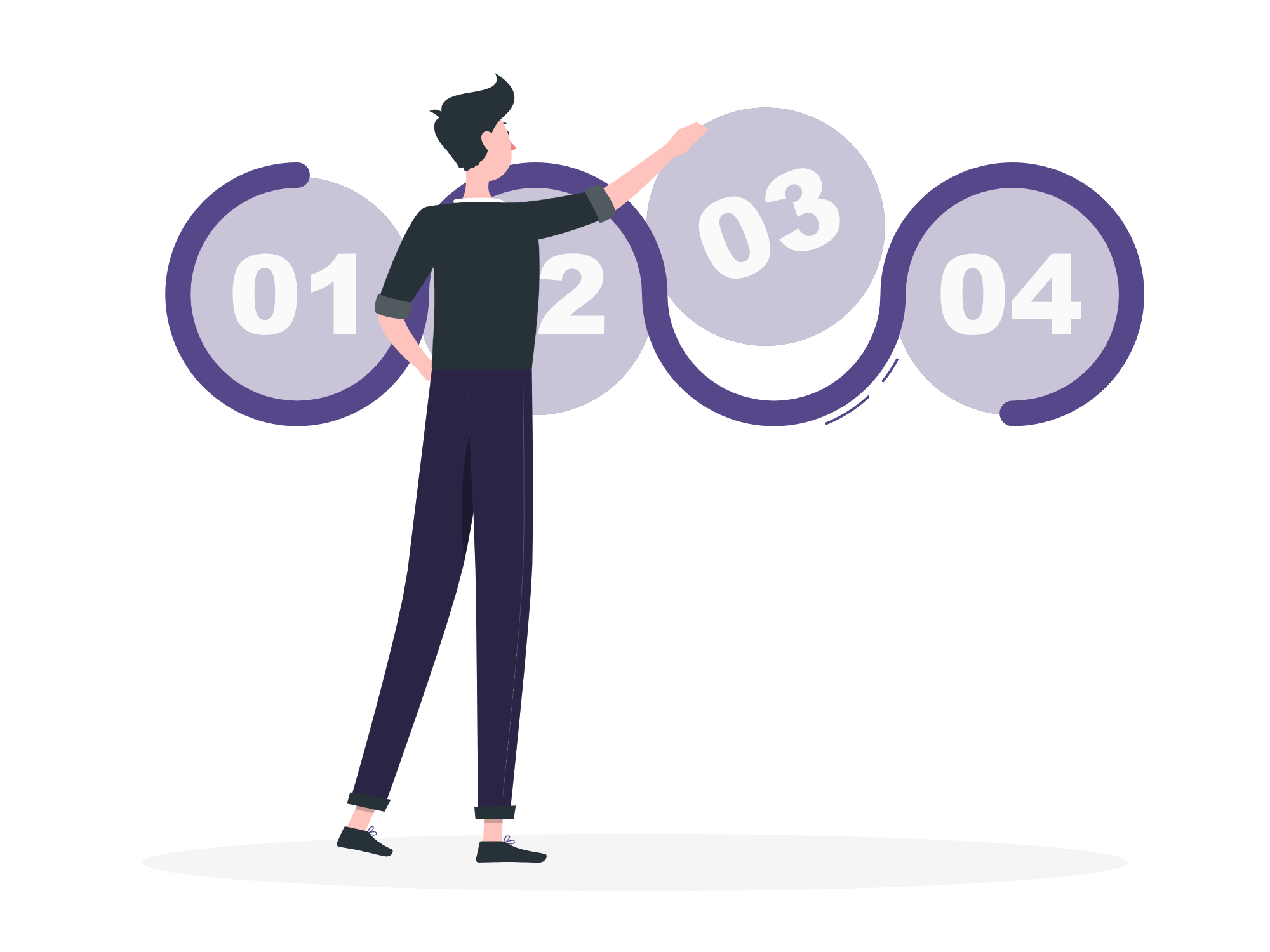The 4 Key Steps
STEP 1: Define core research questions
There are four different areas of interest:
- Everything to do with democratic inclusion – young people’s citizenship and participation;
- Everything to do with sexual and reproductive health of young people and their relevant gender rights;
- Everything to do with young people’s communication and digital media: the digital media young people use, the digital landscape, gatekeepers and censors, barriers and opportunities, and relevant legislation;
- Everything to do with on-line and real-life safety and security.
For the relevant areas, start by defining the core questions and decide what information is needed. Here, specific issues and questions can be highlighted, as well as specific indicators that should be used, for example, the number of girls who get pregnant before the age of 18, the freedom index, and so on. Specific information can also be divided into different groups, such as gender, age, urban/rural, ethnicity, or religion.
Let’s start with your first assignment and learn by doing.

Go to Assignment 1.1: Research Questions.
STEP 2: Sources of information
Once you have identified your research questions, the next step is to determine how best you can find the answers to your questions. There are two main approaches:
- To use existing information (secondary data) from studies that have been conducted and published. This method is called desk research.
- To collect new (primary) data using methods online content analysis (social listening), surveys, focus groups or interviews.
SECONDARY DATA COLLECTION
- Existing desk studies, reports and information. This includes information from expert organisations [such as the IPPF, NDI, Amnesty International, Human Rights Watch, Freedom House], reports from RNW or other reliable organisations as well as relevant statistical databases. See list of possible sources for desk research.
- If this is not enough, you may need additional information. Carrying out extensive surveys is not advisable, but topics for further desk research and possible sources to explore can be suggested.
PRIMARY DATA COLLECTION
- RNW media uses different methods to collect quantitative and qualitative data, using digital and non-digital tools. Depending on the objectives of the programme, this is done through a mixed-method approach consisting of quantitative methods (surveys, statistical analysis) and qualitative methods (focus group discussions, interviews). Watch the video below for an overview of the four types of primary data collection:
- Online content analysis (social listening): This is a method to analyse the discourse on social media of online publicly available platforms (for example, Twitter, news, forums, blogs, YouTube). Social media platforms are increasingly becoming a space for (young) people to express their needs and opinions. Monitoring and analysing social media discourse – also called social listening – can provide valuable insights for any organisation serving an (online) audience. It provides a real-time approach to detect social developments that are discussed online.
- Focus groups: Often used in RNW to assess the needs of users prior to a project. But Focus Groups can also be used to collect (qualitative) data on the results (primarily on the outcomes) of your project. This is especially useful to add depth to your qualitative data, for instance by asking members of the focus group to help explain why certain trends occur in the data.
- Interviews: Identify resource people to engage with and interview, such as reliable regional experts. When interviewing these experts, it is important to ask open questions, to explore these, and to consistently summarise and request proof of the statements.
- Surveys: You can efficiently find out about people’s opinions, experiences or attitudes on certain issues by using an online survey like survalyzer, Microsoft forms or google forms. People can also self-assess their learning or behaviour change (‘I gained new insights’), which is an easy (though somewhat biased) way to collect outcome data. Online surveys need to be planned carefully, as the response can otherwise be low. The response rate can be boosted through advertising and by offering (modest) prizes. Most survey management tools also offer standardized surveys for inspiration.
Your colleagues at RNW medias’ Programme Monitoring Evaluation and Learning (PMEL) team have created this overview of research methods and tools:

Now that you are aware of how to distinguish secondary data collection methods (desk research) and primary data collection methods like online content analysis (social listening), focus groups, interviews and surveys, let’s apply this knowledge to your own research questions.

Go to Assignment 1.2: Information Detection.
Now that you have completed step 1 by formulating research questions and determined relevant sources of information through mini desk research in step 2, you are well on your way to finding valid answers to your research questions and to completing your first module on your journey to enabling digital communities for social change.
Before you continue with the final assignment, let’s have a look at what other steps it takes to perform a digital country context analysis.
STEP 3: Information validation
Information is often biased, based on different perspectives, views or interests. So, it is essential to keep asking yourself “Is this information valid and reliable?”. Whatever information that is gathered may be disputed and contradicted so it needs to be validated. Once the information has been assembled, it must be reviewed critically to identify:
- Inconsistencies and contradictions between the different sources. Resource people can be consulted to correct the inconsistencies. Alternatively, cite the information of the most reliable source. If they are equally reliable, quote both sources.
- Gaps in information. If possible, go back and consult the resource people again. If that is not an option, make intelligent assumptions: for instance, use information from comparable contexts (for example, a neighbouring country or the region)
- Pieces of information that seem unreliable. In these cases, seek additional information, for instance consulting the resource people. The knowledge of resource people is a good way to resolve most validity issues so it may be useful to meet with them for a peer review of the information.
If you’d like to know more about the five pillars of verification and how you can identify trustworthy sources, make sure to watch the video below:
STEP 4: Write the report
Once the necessary information has been gathered and validated, the next step is to report on it. The report summarises the answers found to the core questions and should be concise, complete and conclusive. It should explain what is going on in the country on the specific issues and draw conclusions on the trends and main problems. Share the draft of the report with colleagues or peers and use their input to then produce a final version.
Are you ready to wrap up the first module?
After you have checked out different research methods and applied a mini desk research, let’s focus on the tools that provide information about the digital sphere.


